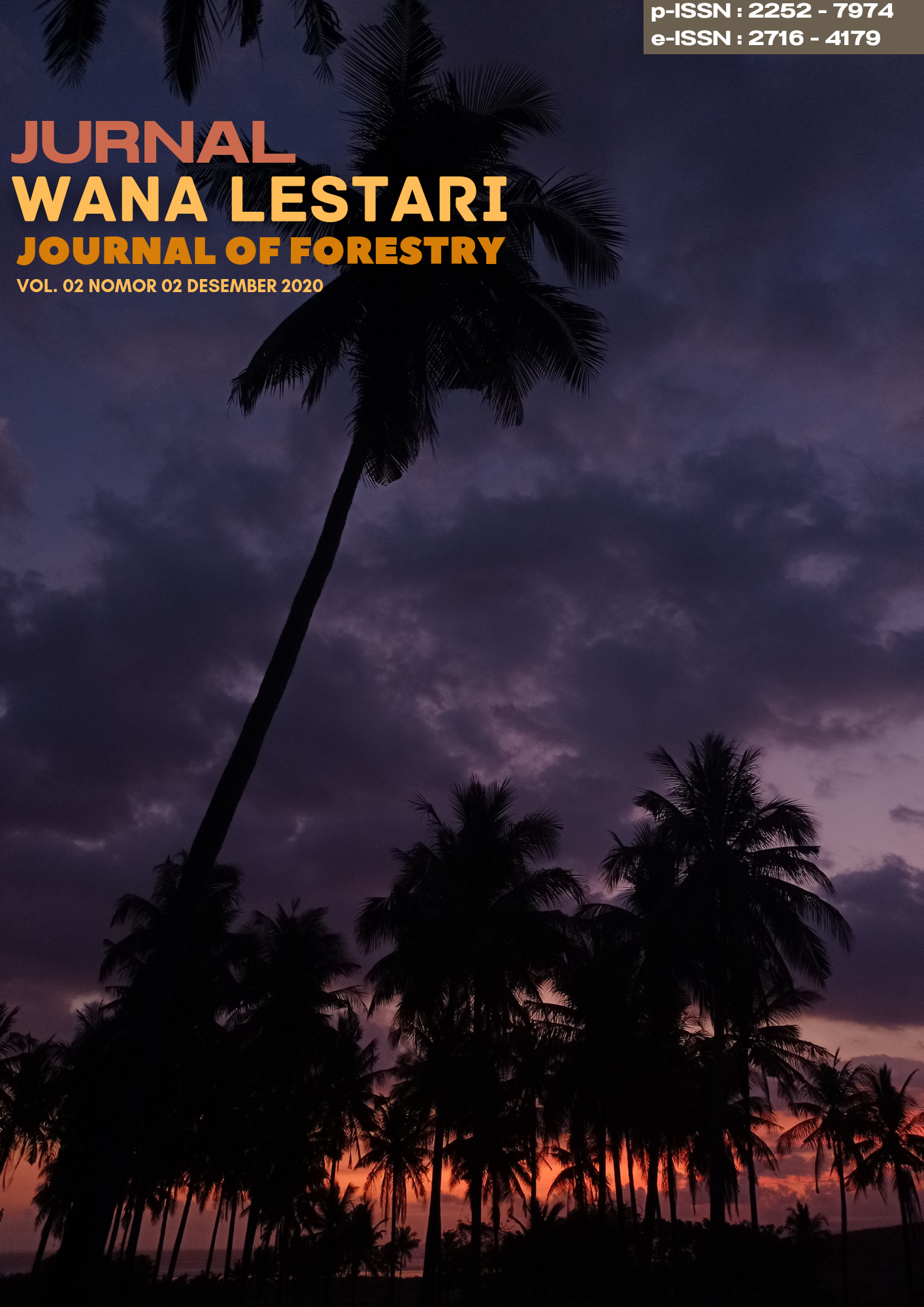HEALTH ASSESSMENT OF TEAK FOREST (Tectona grandis L.) IN NAEKASA VILLAGE, TASIFETO BARAT, KECUPATEN BELU
Abstract
Forest Health Monitoring (FHM) is a forest monitoring action to analyze the condition of forest stands. The purpose of this study was to assess the health level of teak stands, namely by indicators of tree damage and tree crown conditions and to find out information about limiting factors that affect the health level of teak forest stands. Collecting data using the sample method, forest health monitoring (FHM) method of 3 (three) cluster plots with a total of 3 Ha of observations from a total area of 138 Ha. The data collected are primary data and secondary data. Based on the results of the study, the most common damage to trees was termite nests with a percentage of 25% and the lowest was broken roots with a percentage of 1% while for the location of the most damage was the top of the tree trunk with a percentage of 32%, and the lowest namely the lower part of the tree and the top of the tree trunk with a percentage of 0%. Whereas for tree crown damage with each VCR value, namely for a good VCR value with 90 trees (12%), moderate VCR value with 456 trees (54% and VCR value) low with 220 trees (29%) and there is no VCR value 4. Based on the research, there is a lot of damage because the research was carried out in the dry season so that a lot of damage was found where the trees shed their leaves to reduce evaporation so that it could affect the condition of the tree crown. So that in order to maintain the health of the forest, the authorities and the people living in the Jati Udukama forest area will continue to preserve the forest.

 Agripina Aek Asa(1)
Agripina Aek Asa(1)







